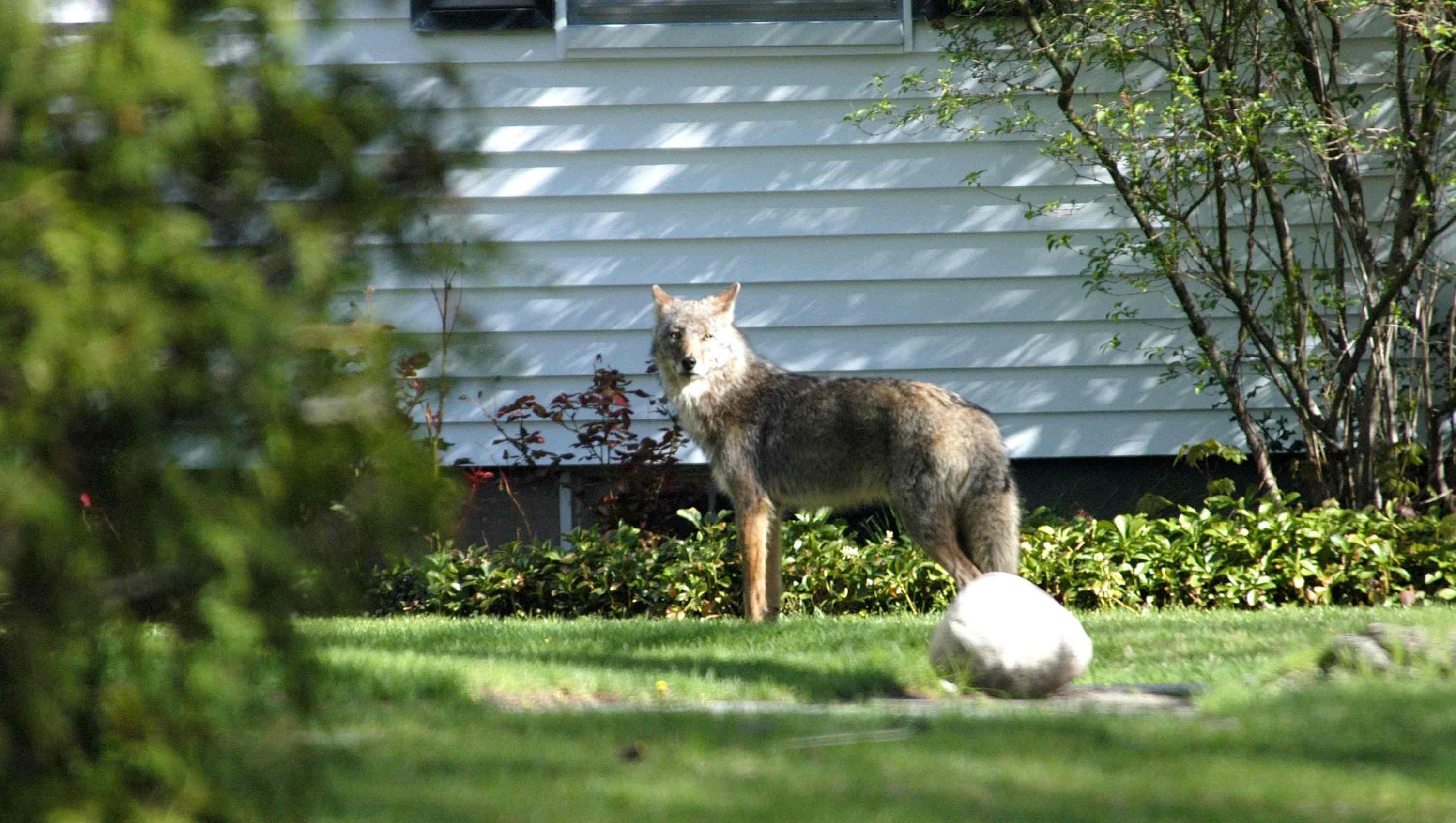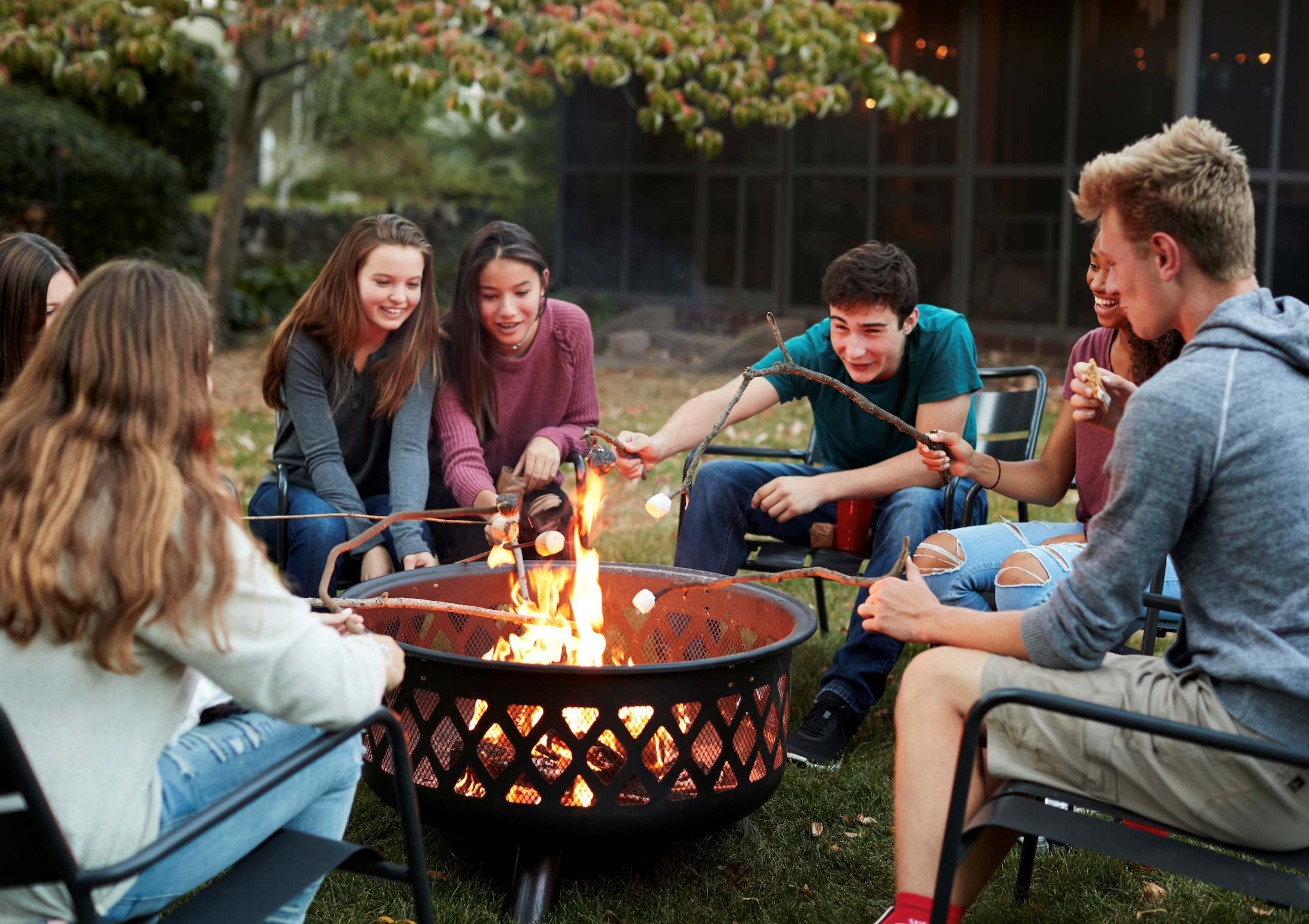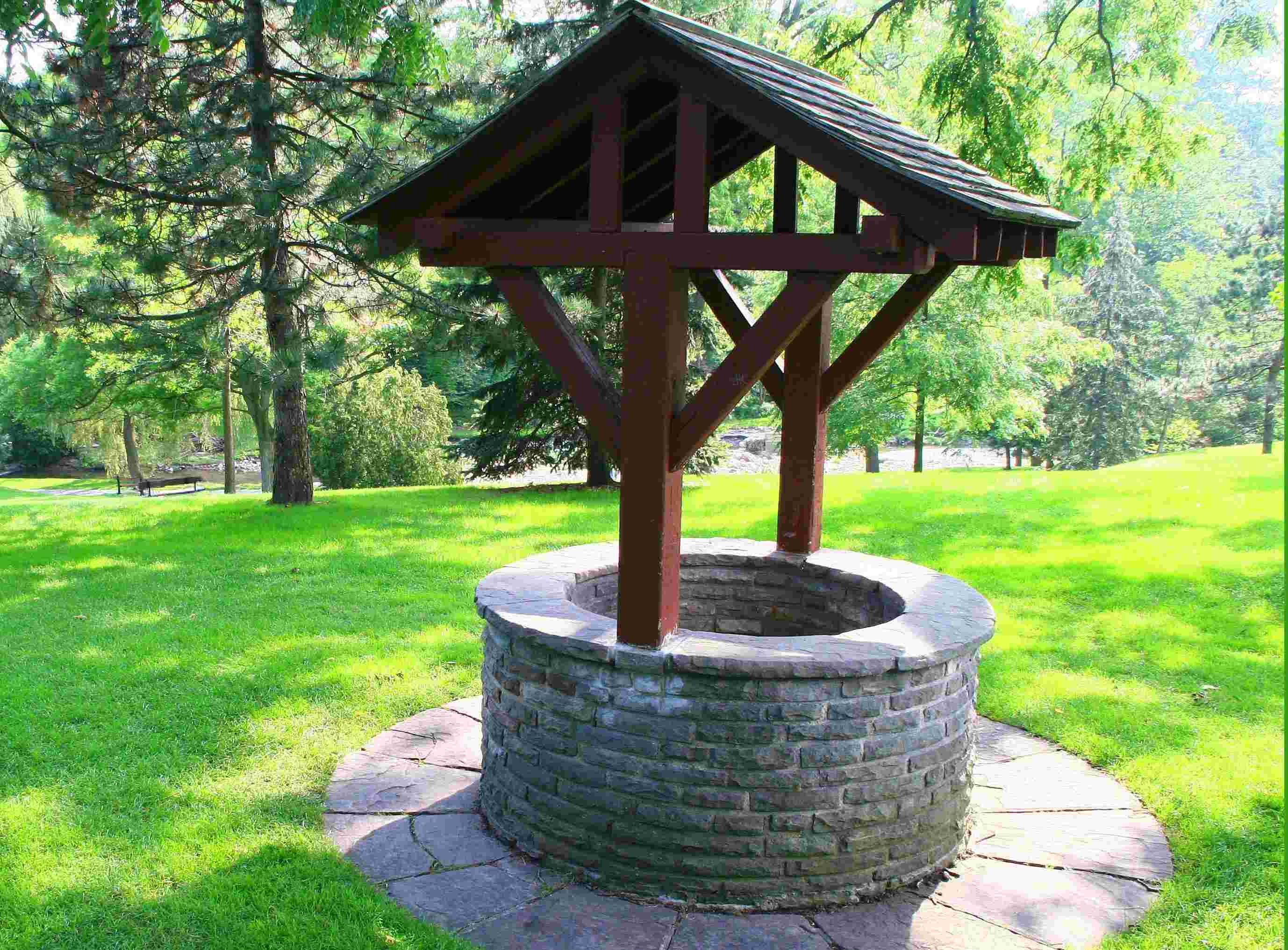Home>Gardening Tips and Tricks>How To Catch A Coyote In Your Backyard


Gardening Tips and Tricks
How To Catch A Coyote In Your Backyard
Published: August 5, 2023
Learn effective techniques for problem solving and catch a coyote in your backyard with our expert guide. Don't let unwanted wildlife become a nuisance anymore.
(Many of the links in this article redirect to a specific reviewed product. Your purchase of these products through affiliate links helps to generate commission for Chicagolandgardening.com, at no extra cost. Learn more)
Table of Contents
Introduction
Having a backyard can be a source of joy and relaxation, providing a space for gardening, outdoor activities, and enjoying nature. However, encountering wildlife, such as coyotes, in your backyard can be a cause for concern. Coyotes are highly adaptable and can often be found in urban and suburban areas, posing potential risks to pets, livestock, and even humans.
Understanding how to handle the presence of coyotes in your backyard is essential for maintaining a safe and secure environment. In this article, we will explore the signs of coyote presence, assess the associated risks, and provide practical tips on how to deter and trap coyotes if necessary.
It is important to note that coyotes are typically elusive and avoid human contact. However, they may become bolder if they find food sources or if they feel threatened. By learning how to minimize attractants and implement effective deterrents, you can make your backyard less appealing to coyotes and reduce the likelihood of negative encounters.
Although trapping a coyote should be approached with caution and is typically best left to professionals, we will also provide some basic guidance for those considering this option. Remember, your safety and the well-being of both humans and animals should always be the top priority.
Now, let’s delve into the world of coyotes and learn how to create a safe and harmonious backyard environment for everyone.
Understanding Coyotes
Coyotes are highly adaptable canids that are found throughout North America. They are known for their intelligence, resourcefulness, and ability to thrive in a variety of habitats, including urban and suburban areas. Understanding the behavior and characteristics of coyotes is crucial in effectively managing their presence in your backyard.
Coyotes are generally nocturnal animals, meaning they are most active during the night. However, it is not uncommon to spot them during the daytime, especially in areas with less human activity. They are highly territorial and typically live in family groups known as packs. These packs consist of a breeding pair, their offspring, and sometimes other related individuals.
Feeding on a wide range of prey, including small mammals, birds, and even fruits and vegetables, coyotes have a varied diet. They are opportunistic hunters and scavengers, meaning they will take advantage of any available food sources, including garbage cans, compost piles, and pet food left outside.
Coyotes are known for their distinctive vocalizations, including howls, barks, and yips. These vocalizations serve various purposes, such as communication within the pack, territory marking, and attracting mates. By recognizing and understanding these vocalizations, you can gain insight into the presence and behavior of coyotes in your vicinity.
It’s important to note that coyotes are typically wary of humans and will usually avoid direct encounters. However, they may become more comfortable and less fearful if they discover a reliable food source or if they feel threatened, such as when protecting their young.
By understanding the natural behavior and tendencies of coyotes, you can take appropriate steps to minimize their presence and keep your backyard safe for both humans and wildlife.
Signs of Coyote Presence
Being able to recognize the signs of coyote presence in your backyard is essential for effectively addressing the situation. Here are some common indicators that coyotes may be frequenting your area:
- Tracks: Look for paw prints in muddy or soft areas of your yard. Coyote tracks are generally smaller than those of a dog, with claw marks showing in front of the toes.
- Scat: Coyote droppings can often be found along trails, near trees, or in open areas. They are cylindrical in shape and typically contain hair, bones, and remnants of their diet.
- Howling or yipping: Pay attention to any nighttime vocalizations. Coyotes communicate through howls, yips, and barks, often as a way of establishing territory.
- Physical evidence of predation: Keep an eye out for evidence of predation on pets, livestock, or even wildlife in your backyard. Coyotes are skilled hunters and may leave behind scattered feathers, fur, or carcasses.
- Disturbed vegetation: Notice any areas in your yard where the vegetation has been disturbed, such as flattened grass or disturbed soil, which could indicate a den or nesting site.
- Missing or disturbed trash: If you regularly find your trash cans knocked over or scattered about, it could be a sign of coyotes foraging for food.
It’s important to remember that the presence of these signs doesn’t necessarily mean that coyotes pose an immediate threat. However, they do indicate that coyotes are active in your area. By remaining vigilant and taking appropriate precautions, you can minimize the chances of negative interactions or conflicts.
Next, we will assess the risks associated with coyote presence and determine the steps to take to create a safer environment in your backyard.
Assessing the Risk
When faced with the presence of coyotes in your backyard, it is important to assess the potential risks they may pose to ensure the safety of your pets, livestock, and family members. Understanding the level of risk associated with coyotes can help guide your actions and determine the appropriate measures to take.
First, consider the behavior of the coyotes in your area. Are they exhibiting bold and aggressive behavior, or are they maintaining a healthy distance and avoiding contact with humans? Coyotes that have become habituated to humans or have lost their natural fear pose a higher risk. If you observe coyotes approaching people or showing signs of aggression, it is crucial to address the situation promptly.
Another factor to consider is the presence and vulnerability of your pets or livestock. Small pets, such as cats or small dogs, can be seen as potential prey by coyotes. If you have outdoor animals, make sure they are supervised or secured in a safe enclosure. Keep in mind that even larger livestock may be at risk if coyotes are present.
Additionally, assess the layout of your backyard and surrounding area. Are there natural or man-made features that could attract or provide shelter for coyotes, such as dense vegetation, water sources, or easily accessible garbage cans? Understanding the factors that may be drawing coyotes to your yard can help you develop a strategy to minimize their presence.
Consider your neighborhood and community as a whole. Have there been reports of coyote sightings or incidents in the area? Communicating with your neighbors and local authorities can provide valuable information about the scale and severity of the coyote issue, as well as any ongoing management efforts.
By carefully evaluating the behavior of the coyotes, the vulnerability of your pets or livestock, the characteristics of your backyard, and the local context, you can gain a better understanding of the potential risks involved. Armed with this information, you can then proceed to create a plan to coyote-proof your yard effectively.
Creating a Coyote-Proof Yard
When it comes to minimizing the presence of coyotes in your backyard, prevention is key. By implementing various strategies and modifying your yard, you can create a coyote-proof environment that discourages their presence. Here are some measures you can take:
- Secure fencing: Install a sturdy fence around your yard, preferably one that extends below ground level to prevent coyotes from digging underneath. The fence should be at least six feet tall to discourage them from jumping over it.
- Trim vegetation: Keep landscaping trimmed and well-maintained to eliminate potential hiding spots for coyotes.
- Remove debris: Clear away any fallen logs, brush, or other debris that could serve as shelter for coyotes.
- Install motion-activated lights: Coyotes are nocturnal creatures, and bright lights can deter them from approaching your property.
- Use scare devices: Place motion-activated sprinklers, noise-making devices, or visual deterrents like shiny objects in your yard to startle and discourage coyotes.
- Keep pets and food indoors: Never leave pet food or water bowls outside, as they can attract coyotes. Additionally, ensure that your pets are supervised or kept indoors, especially during dusk and dawn when coyotes are most active.
- Secure garbage cans: Use secure, animal-proof garbage cans and keep them in a location that is not easily accessible to coyotes.
In addition to these measures, consider hosting outdoor activities in your yard and encouraging human presence. Coyotes are generally wary of people, so increased human activity can help deter them.
Remember, creating a coyote-proof yard is not a foolproof solution, but it significantly reduces the risk of coyote encounters. Meticulous planning and the implementation of multiple strategies are essential for effective coyote management.
Next, we will discuss the importance of removing attractants from your yard to further discourage coyotes from frequenting your property.
Removing Attractants
One of the most effective ways to keep coyotes away from your yard is to remove any attractants that may tempt them to visit. By eliminating potential food sources and limiting their access to resources, you can significantly reduce the likelihood of coyotes frequenting your property. Here are some key steps to take:
- Securely store trash and compost: Coyotes are opportunistic scavengers and will readily feast on garbage and compost. Use animal-proof containers and keep them in a secure area, such as a garage or shed, until the designated collection day.
- Remove fallen fruit and bird feeders: Coyotes are attracted to fallen fruit and bird feeders, which can serve as an easy food source. Regularly clean up any excess fruit in your yard and consider removing bird feeders or elevating them to a height that is inaccessible to coyotes.
- Secure livestock and poultry: If you keep livestock or poultry, make sure they are securely housed in sturdy enclosures or barns, especially during nighttime when coyotes are most active. Use electric fencing if necessary to add an extra layer of protection.
- Control rodent populations: Rodents are a common food source for coyotes. Implement measures to minimize rodent access to food and shelter, such as sealing any openings in your home and keeping garbage storage areas clean.
- Manage fallen pet food: If you have outdoor pets, don’t leave their food bowls outside as they can attract coyotes. Remove any pet food that may have fallen or been left uneaten.
- Clear brush and tall grass: Coyotes are more likely to approach yards with overgrown vegetation, as it provides both hiding spots and potential prey. Keep your yard well-maintained, regularly removing tall grass and brush.
By diligently removing attractants from your yard, you are eliminating the main reasons why coyotes would be drawn to your property. This reduces the chances of negative interactions and encourages them to seek food elsewhere.
While these measures significantly reduce the risk of coyote presence, keep in mind that complete elimination of coyotes from your neighborhood may not be possible or desirable. Coyotes play a vital role in ecosystems and can help control rodent populations. Therefore, it is important to maintain a balance between minimizing risks and coexisting with wildlife.
Next, we will explore additional deterrent methods that can be employed to discourage coyotes from entering your yard.
Implementing Deterrents
In addition to removing attractants, implementing deterrents can further discourage coyotes from entering and establishing a presence in your yard. Deterrents aim to make your property less inviting and less comfortable for these animals. Here are some effective deterrent methods:
- Noise makers: Coyotes are generally wary of loud sounds. Utilize noise-making devices, such as motion-activated alarms, wind chimes, or even an occasional blast from an air horn, to startle and discourage them.
- Scents: Certain scents can repel coyotes. Consider using natural deterrents like ammonia-soaked rags, predator urine, or commercial coyote repellents around the perimeter of your yard.
- Fencing modifications: If you have an existing fence, you can make it more coyote-proof by adding extensions at the top or installing a coyote roller, which is a rolling bar affixed to the top that makes it difficult for coyotes to gain a foothold.
- Visual deterrence: Coyotes are less likely to approach areas with visual obstacles. Install motion-activated lights, hanging shiny objects, or reflective tape in your yard to create visual disturbances that deter coyotes.
- Guard animals: Some larger dogs can be effective deterrents by their presence alone. However, ensure that your dog is safely contained and properly supervised to prevent any conflicts.
- Ultrasonic devices: Ultrasonic devices emit high-frequency sounds that are unpleasant to coyotes and can discourage them from entering your yard. These devices are typically motion-activated.
It’s important to note that while deterrents can be effective, coyotes are intelligent animals. They may become habituated over time or find ways to overcome deterrents. Therefore, it is necessary to regularly reassess and adjust your deterrent strategies to maintain their effectiveness.
By implementing a combination of deterrent methods, you can create an environment that is less attractive and less welcoming to coyotes. These measures not only help protect your property and pets but also encourage coyotes to seek alternative habitats and food sources.
Next, we will briefly touch upon the option of trapping a coyote and when professional assistance may be necessary.
Trapping a Coyote
Trapping a coyote should be approached with caution and is typically best left to professionals who have the knowledge and experience in handling wildlife. However, in certain situations, trapping may be considered as a last resort when all other deterrent methods have been unsuccessful or when there is an immediate threat to human safety or significant damage to property.
If you are considering trapping a coyote, here are a few key points to keep in mind:
- Check local regulations: Before attempting to trap a coyote, familiarize yourself with the local laws and regulations regarding trapping, as well as any permits or licenses that may be required.
- Use humane traps: If trapping is necessary, always use humane traps specifically designed for capturing coyotes. These traps are designed to prevent harm to the animal while allowing for safe and effective capture.
- Follow proper trapping procedures: It is essential to adhere to proper trapping procedures to ensure the safety of both the trapper and the coyote. This includes checking traps regularly, using bait that is legal and specific to coyotes, and releasing any unintentionally trapped nontarget animals unharmed.
- Consider seeking professional assistance: Given the potential risks and complexities involved, it is recommended to contact a wildlife management professional or local animal control agency for assistance in trapping and removing a coyote from your property.
Trapping should only be considered as a last resort after all other preventative measures have failed, and professional assistance should always be sought, whenever possible.
It is essential to approach coyote trapping with the utmost care and concern for both the welfare of the animal and the safety of humans. By involving professionals who are experienced in wildlife management, you can ensure that the trapping process is conducted safely, ethically, and in compliance with local regulations.
Finally, let’s conclude our discussion on how to manage coyotes in your backyard.
Professional Assistance
When dealing with coyotes in your backyard, seeking professional assistance can offer several benefits. Wildlife management professionals or local animal control agencies have the expertise and experience to handle coyote encounters effectively and ethically. Here are some reasons why professional assistance may be necessary:
- Expert knowledge: Professionals in wildlife management have an in-depth understanding of coyote behavior, biology, and the most effective methods for handling them. They can assess the situation accurately and provide appropriate guidance.
- Safe capture and removal: Trained professionals have the necessary equipment and techniques to safely and humanely capture and remove coyotes from your property, minimizing risks to both humans and animals involved.
- Compliance with regulations: Local regulations and laws may dictate specific protocols for dealing with coyotes. Professionals are well-versed in these regulations and can ensure that all actions taken are carried out in compliance with legal requirements.
- Prevention strategies: Wildlife management experts can also assess your backyard and provide advice on implementing effective prevention strategies tailored to your specific situation. They can offer guidance on habitat modification, fencing, and other measures to minimize coyote presence in the long term.
- Educational resources: Professionals often provide valuable educational resources and information on living with wildlife. They can help you better understand coyote behavior, teach you how to prevent conflicts, and raise awareness in your community.
Remember, the safety of both humans and animals should always be the top priority. If you are unsure about how to handle a coyote encounter or if the situation poses a significant risk, it is best to reach out to professionals for assistance.
By involving experts, you can ensure that the management of coyotes in your backyard is carried out in a responsible and effective manner, focusing on the well-being of both wildlife and your community.
Now that we have explored the various aspects of managing coyotes in your backyard, you are well-equipped to take proactive measures and create a safer and more harmonious environment for both humans and wildlife.
Conclusion
Encountering coyotes in your backyard can be a concern, but by understanding their behavior, implementing preventive measures, and seeking professional assistance when needed, you can effectively manage their presence and create a safer environment. It’s important to remember that coexisting with wildlife is possible when we take appropriate steps to minimize risks and respect the natural balance of ecosystems.
Start by familiarizing yourself with the signs of coyote presence and assessing the potential risks involved. By recognizing these signs, you can take timely action to deter coyotes from your yard. Creating a coyote-proof yard through secure fencing, removing attractants, and implementing deterrents can significantly reduce the chances of negative encounters.
If all other methods fail or if the situation poses a significant risk, consider professional assistance. Wildlife management professionals have the expertise to handle coyote encounters safely and ethically, ensuring the well-being of both humans and wildlife.
Remember, while it’s essential to take necessary measures to protect your property and pets, maintaining a balance with nature is equally important. Coyotes play a crucial role in ecosystems and can help control rodent populations.
By following these guidelines and staying informed, you can create a backyard that is less appealing to coyotes while promoting coexistence with wildlife. Together, we can foster a harmonious environment where humans and animals can thrive.










